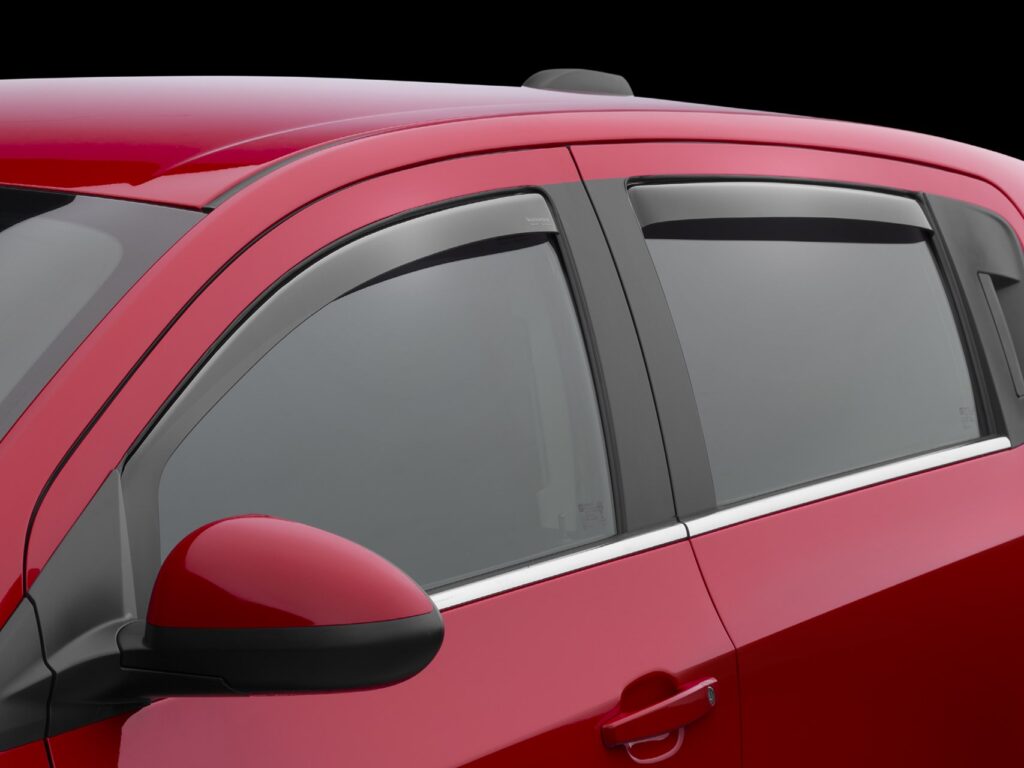Window tinting has become an increasingly popular addition to vehicles in the Boston area, offering a range of benefits such as privacy, glare reduction, and heat rejection. When considering window tint options, two stand on top of the rest, carbon window tints and ceramic window tints.
While both serve similar purposes, they differ in composition, performance, and cost. We’ll delve into the contrasts between carbon and ceramic tints, helping you make an informed decision.
Carbon Tint vs. Ceramic Tint – Composition
Carbon Window Tints:
Particles of carbon are incorporated into the film during the production process of carbon window tints. This exclusive formulation renders them free from metallic properties and non-reflective, minimizing disruptions to electronic devices such as GPS, radio signals, and cell phones. Furthermore, this gives them an elegant matte appearance that distinguishes them from all other window tint advancements. However, if you desire alternative colors aside from black or charcoal, these options will not be available.
Ceramic Window Tints:
These window tints represent the most advanced window tinting technology currently on the market. Incorporated within the layers of the film are non-metallic ceramic nanoparticles.
These nanoparticles offer impressive heat rejection properties and UV protection without interfering with electronic devices such as GPS, cell phones, and radio signals. This is a common concern with metallic-based tints. The ceramic composition also ensures that the tint remains durable over time, as it is less prone to fading or discoloration. These tints also allow for excellent heat and UV rejection, even at very light tinting levels.
Carbon Tint vs. Ceramic Tint – Performance
Carbon Window Tints:
These tints are renowned for their efficient heat rejection capabilities. By absorbing a substantial amount of infrared heat, they effectively keep the vehicle or building cooler, reducing the need for excessive air conditioning. Moreover, they provide good glare reduction, enhancing comfort for occupants by minimizing the strain on their eyes.
Ceramic Window Tints:
Ceramic tints excel in both heat and UV rejection. The ceramic nanoparticles block a higher percentage of UV rays, offering enhanced protection against sun-induced skin damage and interior fading. They provide excellent heat reduction without relying on metallic elements, making them particularly suitable for modern vehicles equipped with advanced electronics. Additionally, ceramic tints maintain optimal visibility during nighttime, ensuring the safety of the driver. While carbon window tints perform exceptionally well, ceramic window tints still beat them out, especially regarding protection from infrared.
Carbon Tint vs Ceramic Tint – Aesthetics
Carbon Window Tints:
Aside from their generally excellent performance, the big selling point for those looking at their tints is the look they give. The carbon nanoparticles found in the film provide these tints with a very unique matte look. This dark matte finish can serve as a great contrast to bright exterior colors or to further a stealthy and sophisticated look on a car with darker paint. These particles are also very stable and will last a long time without fading and ruining the look of your windows.
Ceramic Window Tints:
Ceramic tints come in a wide variety of shades and, in particular, are great for people that don’t want overly dark tints but still want excellent protection from the sun. Many of these tints have similar protection levels regardless of tint levels, allowing you to have much lighter tints. Of course, ceramic tints are also available in much darker tones for those that are more privacy-conscious.
Carbon Tint vs. Ceramic Tint – Cost
Carbon Window Tints:
While carbon tints are far from the cheapest window tint available, they are still less expensive than their ceramic counterpart. These tints offer performance close to ceramic tints, so it could be a good opportunity to save some bucks, especially if you like the matte look.
Ceramic Window Tints:
Ceramic window tints are typically more expensive due to their advanced composition and superior performance. However, the increased cost allows you to have the best UV and heat protection available on the market today.
Install Car Window Tints Today
Both carbon and ceramic tints represent the best of the best when it comes to window tinting technologies. While ceramic window tints do beat out carbon tints when it comes to protection, the actual improvement may not be worth the increased cost associated with these tints, particularly if you like the matte look that carbon tints give. Still, if you want the absolute best of the best, there’s nothing better than ceramic tints.
If you need help figuring out the best car window tint for you, don’t hesitate to contact the helpful team at ProCarSound&Security, who can advise you on what tints are best for you and install them for you.








